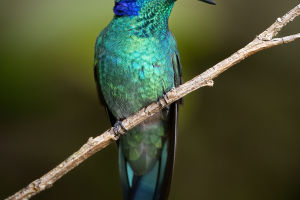Dolphins are among the smartest animals on Earth, and numerous studies have confirmed their high intelligence.
Dolphins exhibit complex social behaviors, language skills, remarkable problem-solving abilities, and self-awareness.
These attributes make dolphins a subject of great interest in marine biological research.
One of the most striking aspects of dolphin intelligence is their brain-to-body weight ratio, which is one of the highest in the animal kingdom. This high ratio is indicative of their advanced cognitive abilities.
The dolphin brain, particularly the cerebral cortex, is highly complex and shares similarities with the human cerebral cortex. This region of the brain is crucial for processing higher cognitive functions such as language, memory, and problem-solving.
Research has shown that dolphins are capable of sophisticated imitation behaviors, tool use, and even cultural transmission. For example, bottlenose dolphins in Australia use marine sponges to protect their snouts while searching for food on the seabed.
This behavior, believed to be passed down through generations, highlights the dolphins' learning and memory capabilities.
Communication is another area where dolphins excel. Dolphin sounds, produced through their sophisticated sonar systems, play a vital role in their interaction with the environment and with each other.
Dolphins use echolocation by emitting high-frequency clicking sounds to detect the location of prey, obstacles, and other dolphins, even in dark or murky waters. Additionally, dolphins produce whistles and grunts that are considered part of their language.
Each dolphin has a unique whistle, akin to a human name, which is used for individual identification and social interaction. Scientists are studying these sounds to decode dolphin language and gain a deeper understanding of their intricate social structures.
Dolphins also display an extraordinary level of self-awareness. Experiments have shown that dolphins can recognize themselves in mirrors, a trait known as mirror self-recognition. This ability is rare in the animal kingdom and is shared only with a few other species such as humans, great apes, and elephants.
Through a mark test, where scientists place a mark on a dolphin's body and observe its reaction in front of a mirror, it has been found that dolphins will inspect the mark, indicating their understanding that the reflection is their own. This self-recognition underscores the dolphins' advanced consciousness and cognitive functions.
The distinction between whales and dolphins primarily lies in their size. Generally, cetaceans smaller than 3-4.5 meters are called dolphins, while those larger are referred to as whales. Both whales and dolphins belong to the order Cetacea, which is further divided into two suborders: Mysticeti and Odontoceti.
Baleen whales possess keratinous baleen plates that allow them to filter-feed on krill and other small marine organisms. In contrast, Toothed whales, have individual teeth and primarily feed on fish and squid.
Sharks, on the other hand, belong to a completely different class known as Chondrichthyes, specifically the order Selachimorpha. Sharks range dramatically in size, from the tiny dwarf lantern shark, which is only about 17 centimeters long, to the enormous whale shark, which can exceed 12 meters in length.
Unlike dolphins and whales, which are mammals, sharks are fish. This fundamental difference is evident in their respiratory systems. Sharks breathe through gill slits, and many species must swim continuously to keep water flowing over their gills for respiration. In contrast, dolphins use lungs and must surface regularly to breathe before diving back underwater.
Dolphins stand out not only for their intelligence and social complexity but also for their unique biological and ecological characteristics. Their advanced cognitive abilities, communication skills, and self-awareness place them among the most fascinating animals in the ocean.
As we continue to study dolphins and their relatives, we gain valuable insights into the evolution of intelligence and social behavior in the animal kingdom.


